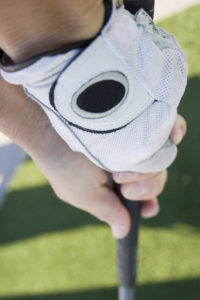 There’s a good chance that you’ve always played with the same putting grip style. Over the years, different putting grips have been introduced by professionals, trickling down to the amateur level. If you are struggling on the greens, consider changing to one of the grips below. 2010 Open Champion Louis Oosthuizen perhaps said it best: “My putting strategy is simple. If you’re not making putts, don’t be afraid to change your technique.”
There’s a good chance that you’ve always played with the same putting grip style. Over the years, different putting grips have been introduced by professionals, trickling down to the amateur level. If you are struggling on the greens, consider changing to one of the grips below. 2010 Open Champion Louis Oosthuizen perhaps said it best: “My putting strategy is simple. If you’re not making putts, don’t be afraid to change your technique.”
A quick note – the following descriptions are for right-handed putters. If you choose to do your best Phil Mickelson impression while on the green, simply flip the descriptions.
- The Traditional, Reverse Overlap Method – This is the grip most commonly used by golfers. It is a modified version of the Vardon-style grip, in that your left forefinger rests on top of the fingers in your right hand. If you are suffering from a breakdown of your left wrist while putting, or an overactive right hand while putting, it may be because of this grip, which doesn’t protect against either deficiency.
- The Cross-Handed Grip – If you have open shoulders – meaning your left shoulder is behind your right shoulder – then consider using this grip, which places your left hand below your right hand. This will keep your shoulders square, giving you a straighter putt as a result. Of the non-traditional grips, this is the one most consistently used.
- The Claw Grip – With this grip, the right hand, between the thumb and the index finger, is placed underneath the grip. As a result, your right hand will be more on the side of the grip as opposed to wrapping around the grip, serving as more of a guide as it brushes or sweeps. You can play around with this grip to find one that feels comfortable to you. Doing so will lock your left wrist in place and prevent your right hand from over-powering. You’ll find a more consistent putting stroke as a result.
- Your Actual Grip On Your Putter – In addition to changing the way you grip your putter, you may want to consider changing the grip of the putter itself. Using a grip that is untapered and consistent in thickness can help ensure that one of your wrists is not more dominant than the other, which can result in you pulling or pushing your putts.
Practice Makes Perfect
There’s only one way to improve your putting skills, and that’s by practicing. If you’re considering changing your putting grip, you will not be able to go out on the course and feel comfortable on the first hole with a new grip. Even though a new grip can help you overcome your putting downfalls, they will feel weird at first. Westlake Golf Course features a putting range that is open daylight until 10:00 pm, giving you ample time to help make the necessary corrections to your putting stroke.
